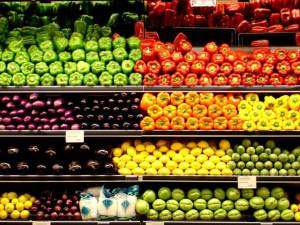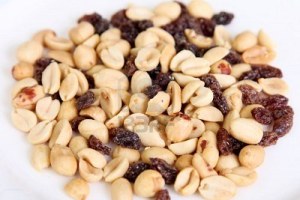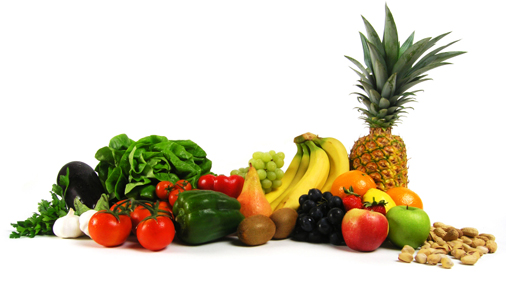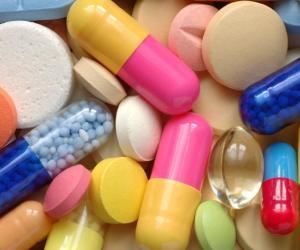Category Archives: Food
Chapter 6: Meat & Poultry
Steinman recommends no more than 1/3 of all food come from animal sources including meat, poultry, seafood, dairy foods, and eggs. Some experts say this number may be too high, but going for plant foods helps reduce exposure to dangerous pesticides as well as to cholesterol and saturated fat. Since farm animals are high on the food chain, they bioaccumulate toxins from the pesticide-treated grasses and grains fed to them. Residues from animal foods are more likely to bioaccumulate in the human body versus residues from plants.
The toxins from animals are stored in their fat tissues. This means that the fattier the food, the more dangerous it is to consume. In one animal study, “chemical carcinogens given to rats were more likely to produce tumors in a group that was fed fatty foods than in a group fed low-fat foods” (p. 74). Another study indicates “that some 20 percent of American meat eaters may have toxic mutagens in their digestive tract that can be absorbed into the bloodstream and can attack cells.” I’ll be attempting to eat less meat, choosing lean cuts, trimming the fat from red meat, and removing the skin from poultry.
I recently watched a movie called Forks Over Knives. The movie also supports what Steinman has found. It even goes as far to suggest that a whole foods plant-based diet can help reduce cancer effects. It’s pretty awesome that everything we need is already found in nature. Here’s a trailer
As I’ve said in my previous post, consumption demands and the farms push to meet those demands but at the expense of our health and environment. Steinman says raising cattle takes a great toll and is contributing to desertification of the West. Save our planet and rain forests by reducing the amount of meat in our diet! The following is a list of which meats to seek out and which to stay away from.
Green: These have the lowest pesticide saturation, present the smallest cancer risk, and are the richest source of nutrients while being lowest in cholesterol and saturated fat.
- chicken (oven-roasted)
- game (alligator meat, frogs’ legs, escargot, buffalo)
- lamb chops
- pork roast
- turkey
Yellow: These have twice the saturation of the green group and half the total saturation of the red group. Eat these in moderation.
- beef round steak
- chicken (fried)
- ham
- pork chops
Red: Eat these seldomly or not at all unless certified organic or hormone- or chemical-free. These meats are saturated with highly concentrated cancer-causing pesticides.
- bacon
- bologna
- fast-food hamburgers
- frankfurters
- ground beef
- liver
- pork sausage
- roast beef
- salami
- sirloin steak
- venison
Steinman, David. Diet for A Poisoned Planet How to Choose Safe Foods for You and Your Family. New York: Ballantine Books, 1990. Print.
Chapter 5: Grains
Formula: [lots of greens and grains] + [low meats & dairy] = low-toxin high-energy diet
Ok, fruits and veggies are going organic unless I need to be selective because my budget is diminishing quicker than I calculated (which I have a feeling may happen). Moving along to the bread food group. Don’t get me wrong, I love my fruits and veggies but my love for bread is no secret. This is great because there are plenty of benefits that comes with eating whole grains.
- They help cleanse your body of toxic elements thus helping to prevent cancer caused by these pollutants. The fiber from whole grains trap the toxins and leads it out of your body before it can ever be absorbed.
- It’s a source of vitamins and minerals.
- Whole grains make you feel fuller with less calories and the fiber helps you lose weight.
- When eating grains, we maximize the planet’s resources. According to Steinman, “if all the grain and soybeans fed to U.S. livestock were used to feed humans instead, they could feed at least 1.3 billion citizens of the planet-far, far more than could be fed by the livestock raised with that grain” (p. 56).
- Whole grains are also excellent for people who need to control their blood sugar.
The best thing is that even chemically grown grains have one of the lowest levels of pesticides and industrial chemicals. The reason you want to choose whole grains is because processed grains have no nutrients. The outer layers, which is high in protein and other essential nutrients, are stripped leaving only the inner portion. Eating white bread and other white-flour products have no real benefits for your body. If more people switch to organic whole grains, it helps lessen the suffering of workers who are exposed to toxic pesticides. I admire Steinman because he also takes into consideration the workers’ and environmental concerns. He states “that if we have any sense of decency we cannot turn our backs on the dangerous exposures faced by workers who grow and fumigate grains, especially since the key to lessening the burden of our fellow Americans is as simple as being an informed shopper” (p. 61).
Here is a list to use when shopping in markets that only sell chemically grown foods.
Green:
- biscuits
- corn bread
- cornflakes
- crisped rice cereal (ex: Rice Krispies)
- egg noodles
- farina
- fruit-flavored sweetened cereal
- granola
- grits
- oatmeal
- oat rings
- pancakes
- pasta
- popcorn
- rice
- saltine crackers
- shredded wheat cereal
- tortillas (corn preferred)
Yellow: These are little less safe. Eat them less than the green light group, but prefer them to meats and high-fat dairy foods. The reason being that the grains with the heaviest pesticide saturation is only half that of the worst dairy, meat, fruit, and vegetable foods. If possible, look for organic substitutes.
- dinner rolls
- muffins
- raisin bran cereal
- rye bread
- white bread
- whole wheat bread
Chapter 4: Fruit & Veggies
Formula: [organic fruits] + [organic veggies] = lower toxin count in the body
All this research is making me anxious to start trying new recipes, but a few more steps before I can dive into cooking. I know now what a balanced diet consists of and to take multivitamin supplements to reap the full benefits. It is time to figure out which foods to stay away from due to pesticides and other residues that can seep into the market produce.
According to my reading from Diet for a Poisoned Planet, Steinman has organized all the food into three categories. Green are foods that would cause up to five excess cancers in one million people and still have some pesticide residues. They are not absolutely and completely free from toxic residues so Steinman is not endorsing that these are safe to eat. He marks these as ones with the least amount of residue so it reduces the intake of toxins into the body. Yellow are foods that would cause five to ten cancers and red are foods with risk beyond ten cancers. He uses the Total Diet Study to compile all the information in his book. Hundreds of foods are tested each year for pesticides. It measures the number of residues found in sixteen samples (example: lettuce had 36 residues in 16 samples meaning each sample had an average of 2-3 pesticide residues), the different types, and the concentration.
So here is the list of what to watch out for.
Green: It’s a go! These are the safest nonorganic foods to eat.
- alfalfa sprouts
- applesauce
- asparagus
- avocados
- adzuki beans
- bananas
- bean sprouts
- beets
- black-eyed peas
- brussels sprouts
- cabbage
- carrots
- cauliflower
- chives
- corn
- cranberry juice
- dates
- figs
- fruit cocktail
- grape juice
- grapefruit
- guavas
- hazelnuts
- lemonade (frozen reconstituted)
- lemons
- lentils
- lima beans (mature)
- limes
- mixed vegetables (canned)
- mushrooms
- navy beans
- onions
- oranges
- papayas
- peaches (canned)
- pears (canned)
- peas
- pecans
- pineapple juice
- pineapples
- pinto beans
- radishes
- rapini
- red beans
- sesame seeds
- shallots
- snap green beans
- sunflower seeds
- tangerines
- tomatoes (canned)
- watercress
- watermelon & watermelon seeds
Yellow: These have a higher pesticide saturation and should be swapped for an organic substitute. According to Steinman, “all plant foods, even the most pesticide-saturated, are better for you than the worst animal foods” (p. 34).
- apple juice, apples
- apricots
- artichokes
- balckberries
- blueberries
- broccoli
- cantaloupe
- celery
- cherries
- cherry tomatoes
- chili peppers
- choysum
- collard greens
- cranberries
- crenshaw melons
- cucumbers
- eggplant
- escarole
- grapefruit juice
- grapes
- green bell peppers
- honeydew melon
- jalapeno peppers
- kale
- kiwi fruit
- leeks
- lettuce
- lima beans (immature)
- mung beans
- nectarines
- okra
- orange juice
- parsley
- parsnips
- peaches
- pears
- persimmons
- plums
- poblano peppers
- pomegranates
- potatoes
- prunes
- radishes
- raspberries
- rutabagas
- serrano chilies
- spinach
- strawberries
- string beans
- summer squash
- sweet potatoes
- swiss chard
- tomatillos
- tomatoes, tomato juice, tomato sauce
- turnip greens, turnips
- winter squash
Red: Avoid these and substitute organic varieties.
- peanuts
- raisins
This list is from the book, which used results from the Total Diet Study of 1986. I went to the Food and Drug Administration website and found updates, but quite frankly I’m not sure what to make of it. A list released by the Environmental Working Group reveals the produce most laced with pesticides from 2011. You can read through an article written by Dan Shapley of The Daily Green for the twelve foods you should buy organically and its substitutes.
Steinman, David. Diet for A Poisoned Planet How to Choose Safe Foods for You and Your Family. New York: Ballantine Books, 1990. Print.
Chapter 2: Yes or No to Vitamin Supplements?
Formula: balanced diet + needed vitamin supplements (different for each person according to his/her diet) = healthy and functioning body
Vitamins are micronutrients needed to sustain life. Humans get vitamins from the foods they eat because the body does not produce them naturally, not at all, or not enough of them. First you’re told you should take vitamin supplements then you’re told you may be taking too many vitamins that it becomes bad for your body. The question ultimately comes down to: do you really need it? I began looking into why vitamin supplements would be bad for you because I heard about it through National Public Radio. I did additional research and here is what I found.
The Harvard School of Public Health explains that following a diet such as the suggested servings of the food pyramid is better than taking vitamins alone. If one does not adhere to a balanced diet, then a multivitamin is recommended. The supplement is taken to complete a balanced diet and give the body the nutrients it needs. The problem comes from taking vitamin supplements without knowing the correct amount to intake.
My mistake was thinking that all vitamin supplements were made the same and giving me the quantities I needed. Dr. Oz explains that vitamin pills provide “pharmaceutical” doses. The doses are higher than what you could get from eating food, meaning one would have to eat a bushel of produce to get the equivalent amount in a vitamin supplement.
I read “Dr. Oz Shares Multi-Vitamin Safety Recommendations” by Timothy Boyer and summarized Dr. Oz’s concern about multivitamins. Problems are found with overdoses of vitamins A and E, calcium, and iron.
- Too much vitamin A has adverse effects such as damaging blood cells, headaches, skin and bone disorders, renal failures, and birth defects in their offspring (Steinman, p. 19). It is recommended to look for labels on multivitamin bottles that say 3,500 IU (injection units) of vitamin A.
- Intaking higher doses of vitamin E is mainly a problem for men because it can increase the development of prostate cancer. Dr. Oz keeps the dose at 30 IU.
- He also says that iron should only be taken by women of childbearing age at 18 milligrams. Excess iron can harden the arteries.
- Calcium has the tendency to bind to other vitamins and prevent their absorption in the body. The recommended dosage in your multivitamin should be no more than 200 milligrams.
One step closer to being on the right track. To check out Dr. Oz’s Ultimate Supplement Checklist, click here. Additional questions and answers on vitamin supplements can be found here.
Steinman, David. Diet for A Poisoned Planet How to Choose Safe Foods for You and Your Family. New York: Ballantine Books, 1990. Print.
Chapter 1: Back to the Basics
Formula: adequate servings of [bread, cereal, rice, pasta] + [veggies] + [fruit] + [milk, yogurt, cheese] + [meat, poultry, fish, dry beans, eggs, nuts] = a strong healthy foundation
I’m going to start with the food pyramid. It’s the chart every little kid was taught in grade school. I remember coloring in my pyramid and making it as pretty as can be. Now that I think about it, that might have been more important to me than actually learning about eating right. Hey, what can I say? I was seven years old.
The original USDA food guide pyramid gives the general servings that is recommended, but it does not take into consideration age and gender. According to the break down provided by the U.S. Department of Agriculture, I fall under the category of active women with a 2,200 calorie diet. This means I would need:
- 9 servings of grains
- 4 servings of vegetables
- 3 servings of fruits
- 2 servings of milk/dairy
- 2 servings of meats/beans (total of 6 oz.)
To meet this requirement, I found information on what counts as a serving.
Grains Group (Bread, cereal, rice, and pasta)
- 1 slice of bread
- About 1 cup of ready-to-eat cereal (this means no preparation needed, for example Special K)
- 1/2 cup of cooked cereal, rice, or pasta
Vegetable Group
- 1 cup of raw leafy vegetables (examples: bok choy, romaine lettuce, arugula, spinach, and watercress)
- 1/2 cup of other vegetables cooked or raw
- 3/4 cup of vegetable juice
Fruit Group
- 1 medium sized apple, orange, banana, or pear
- 1/2 cup of chopped, cooked, or canned fruit
- 3/4 cup of fruit juice
Milk Group (Milk, yogurt, and cheese)
This category includes lactose-free and lactose-reduced products. Fat-free, low-fat, or reduced-fat dairy products preferred.
- 1 cup of milk or yogurt
- 1 1/2 oz. of natural cheese (Cheddar)
- 2 oz. of processed cheese (American)
Meat and Beans Group (Meat, poultry, dry beans, eggs, and nuts)
*Dry beans can be counted in the vegetable group. 1/2 cup of cooked dry beans counts as 1 serving.
- 2-3 oz. of cooked lean meat, poultry, or fish
- 1/2 cup of cooked dry beans or 1/2 cup of tofu counts as 1 ounce of lean meat
- 2 1/2-ounce soyburger or 1 egg counts as 1 ounce of lean meat
- 2 tablespoons of peanut butter or 1/3 cup of nuts counts as 1 ounce of lean meat
Not too difficult. These are the recommendations for a balanced diet. I realize that going overboard on one type of food group tips the scale and may make me miss out on the valuable properties of other foods. Maintaining these servings will also help me maintain my weight. So it’s true when people say eat everything in moderation, but make sure you get your daily servings in.
All information was provided by the Office of Disease Prevention and Health Promotion, the Office of the Assistant Secretary for Health, Office of the Secretary, and the U.S. Department of Health and Human Services through their coordinated website. Additional information about dietary guidelines for children and men can be found here.






